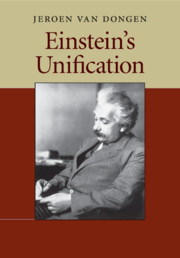Book contents
- Frontmatter
- Contents
- Acknowledgments
- Introduction
- 1 Formulating the gravitational field equations
- 2 On the method of theoretical physics
- 3 Unification and field theory
- 4 Experiment and experience
- 5 The method as directive: semivectors
- 6 Unification in five dimensions
- 7 The method and the quantum
- Conclusion
- References
- Index
5 - The method as directive: semivectors
Published online by Cambridge University Press: 05 May 2013
- Frontmatter
- Contents
- Acknowledgments
- Introduction
- 1 Formulating the gravitational field equations
- 2 On the method of theoretical physics
- 3 Unification and field theory
- 4 Experiment and experience
- 5 The method as directive: semivectors
- 6 Unification in five dimensions
- 7 The method and the quantum
- Conclusion
- References
- Index
Summary
In his 1933 Herbert Spencer lecture on the method of theoretical physics Einstein told his audience that the gravitational field equations can be found by looking for the mathematically simplest equations that a Riemannian metric can satisfy. However, the gravitational field equations were not the only example that Einstein gave in his lecture. His second example was taken from his recent work.
At this point we still lack a theory for those parts of space in which the electrical charge density does not disappear. De Broglie conjectured the existence of a wave field, which served to explain certain quantum properties of matter. Dirac found in the spinors field-magnitudes of a new sort, whose simplest equations enable one to a large extent to deduce the properties of the electron. Subsequently I discovered, in conjunction with my colleague, Dr. Walther Mayer, that these spinors form a special case of a new sort of field, mathematically connected with the four dimensional system, which we called “semivectors.”
Einstein, together with Mayer, had in the course of 1932 turned to the Dirac theory of the electron. They had introduced the “semivector”: a generalization of the spinor, as the above suggests.
- Type
- Chapter
- Information
- Einstein's Unification , pp. 96 - 129Publisher: Cambridge University PressPrint publication year: 2010

